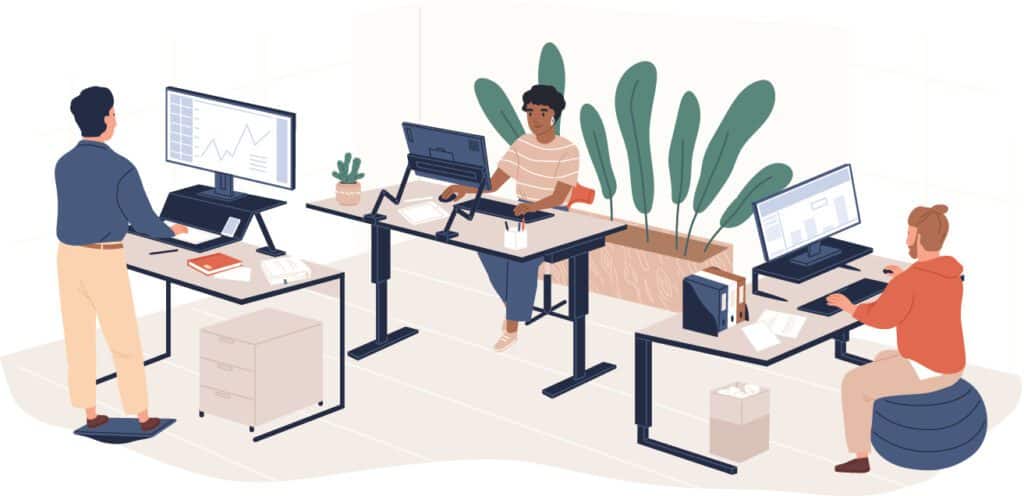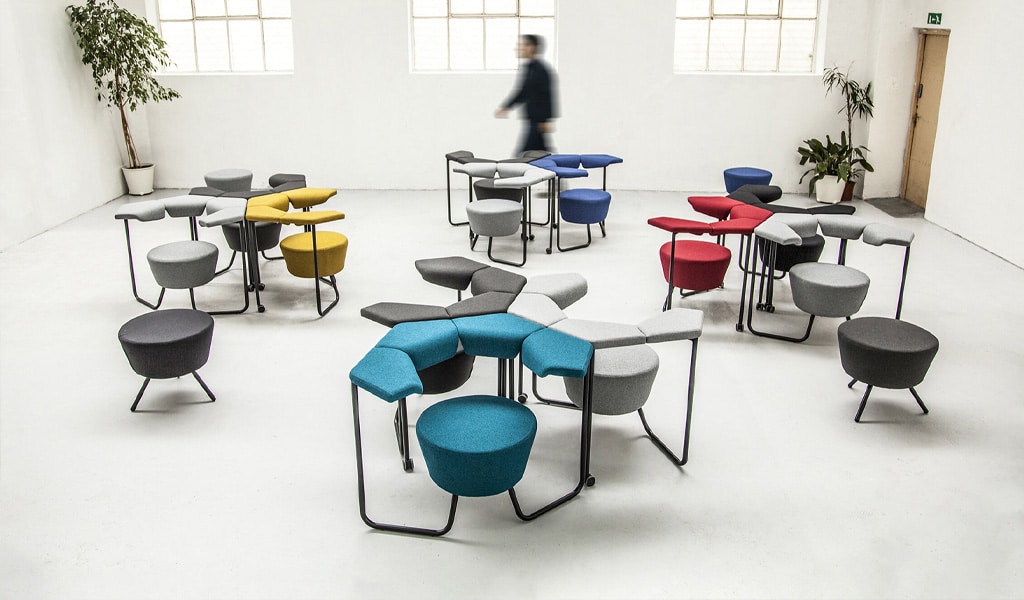How to Achieve Wellbeing in the Office
What is Wellbeing in the Office?
Wellbeing in the Office refers to employees’ overall state of physical, mental, and emotional health and happiness in their workplace. It measures how employees feel about their work environment, the support they receive, and their ability to personally and professionally thrive.
This practice ensures employees are productive, engaged, and motivated. When employees feel physically and mentally well, they are better able to perform their jobs, communicate effectively with coworkers and managers, and make better decisions. Additionally, a positive work environment that supports employee wellbeing can improve employee retention rates and reduce absenteeism and turnover.
Some factors contributing to Wellbeing in the Office include ergonomic workstations, access to healthy food options, opportunities for physical activity, flexible work arrangements, social support from coworkers and managers, and employee wellness programs that provide resources for mental health and stress management.
Overall, prioritising employees’ Wellbeing in the Office is the right thing to do from a human perspective and can lead to a more productive, engaged, and thriving workplace.
What is the current state of Wellbeing in the Office in Ireland?
A study conducted by the Irish Heart Foundation in 2018 concerning Wellbeing in the Office shows that Irish people spend, on average, 7.3 hours a day sitting down. This increases to 8.9 hours daily for students and 8.4 hours for young people aged 15-24.
It’s not hard to imagine the impact that the work routine to which we have become accustomed can have on us. Combine this with poorly designed workstations that do not consider the human body’s natural movement, and the result is more than predictable: Poor performance, high sick leave rates, and an environment dominated by perpetual sitting and the desire to get out of the office.
The human body asks to move, which does not change in working environments. The European Agency for Occupational Safety and Health (EU-OSHA) suggests it is crucial to integrate exercise habits into the work dynamic. Some tips are:
- Stand or walk during phone calls
- Eat your lunch away from your desk
- Walk during lunch breaks and free hours
- Stretch at your desk every 30 minutes
- Stand up and take a break from your computer every 30 minutes.
Imagine doing this in environments with furniture designed to keep employees at workstations for hours. Doesn’t quite fit the idea.
More than ever, well-being is one of the essential elements in designing dynamic, efficient, and attractive workspaces. New professionals expect it not as a benefit but as a requirement. The choice of furniture smartly designed for movement plays a crucial role in achieving this goal.

How to increase productivity with Ergonomics and Wellbeing in the Office
A review of over 250 studies by The Washington State Department of Labor and Industries found a 25% increase in productivity from implementing ergonomic solutions at work. However, this is only the first step towards designing workspaces in the new business world. Designers must see ergonomics as a stimulator for creativity, collaboration, efficiency, and movement.
Beyond thinking about chairs, desks, sofas, and tables, furniture must focus on diverse, ergonomic working environments. This way, professionals can unlock their full potential through Wellbeing in the Office.
Furniture should motivate them to move across the office in a symphony with different spaces, making the most of their features.
Ergonomics, correctly applied in furniture design, enables and enhances maximum performance. This makes offices attractive and empowering spaces, and professionals work without constraints. However, the objective of ergonomics should be Wellbeing in the Office through dynamics and movement rather than sitting for hours in the same place.
How to promote Wellbeing in the Office through Furniture
We all want comfortable, healthy, and adaptable workstations to our needs. But at what price? Architects, designers, contractors, and managers are constantly challenged to meet these expectations.
After a global pandemic that tested the basics of the workspace, the return to the office can be taken in two ways:
- Frustration and uncertainty in the face of new requirements and learned habits
- Motivation and creativity to design immersive, dynamic, healthy, and adaptable environments to the many human particularities.
We choose success! With a broad spectrum of new work scenarios, the possibilities will only be as endless as the creativity applied to the design. The goal is always to include Wellbeing in the Office and the human body’s natural movement.
As another of our highly creative and trusted suppliers, GreyFox, demonstrates with its FLOAT collection, movement is the new black. Their idea consists of enabling the furniture to be arranged in many different configurations according to the needs of each situation, for example, collaborative work, creative solo sessions, or quick team meetings. The recipe’s main ingredient in FLOAT, however, is to activate the impulse to move to different spaces to carry out each task.

How to nurture Wellbeing in the Office with long-lasting furniture
Performance and durability are crucial in smart, responsible and purposeful furniture design. The strength of the material used in furniture can determine everything from durability to ergonomics and occupational safety.
Design firms such as Fritz Hansen have dedicated efforts to implementing ergonomic design and highly durable materials. Their goal is to boost natural human movement.
Such is the case, for example, of the Series 7™ chair, an icon in modern furniture history. This chair is the most popular design within Fritz Hansen’s collections. Designed by Arne Jacobsen in 1955, the chair is made from nine layers of pressure moulded veneer for strength, flexibility, and durability. This allows quickly switching from sitting to standing up or moving from one space to another organically.
Designing furniture out of the comfort zone
Companies face a new and challenging environment amid the return to on-site work. Wellbeing in the Office becomes an empowering, motivating, and inclusive element, as mentioned above.
It is to be expected that the responsibility for building optimal workspaces falls on the companies and not on the employees. In turn, this results in a considerable share of ownership for the designers and contractors in charge of realising every detail specified in the projects.
All roads lead to Rome, the saying goes. Likewise, all challenges around Wellbeing in the Office lead to the supplier. Choosing the right partners to conceive projects will make the difference between a smooth, logical and satisfactory route. Otherwise, it will be a cumbersome, costly and uncertain journey.
At Walls to Workstations, we are ready, motivated, and eager to continue promoting smart, dynamic, attractive, and ergonomic office furniture for workplace wellness. Along with our select list of world-class suppliers and our team of experts, we have realised that Wellbeing in the Office is like riding a bicycle: to keep the balance, you must keep moving.
Let's continue the conversation
Get in touch and schedule a consultation with our frontline specialists
Take me there
